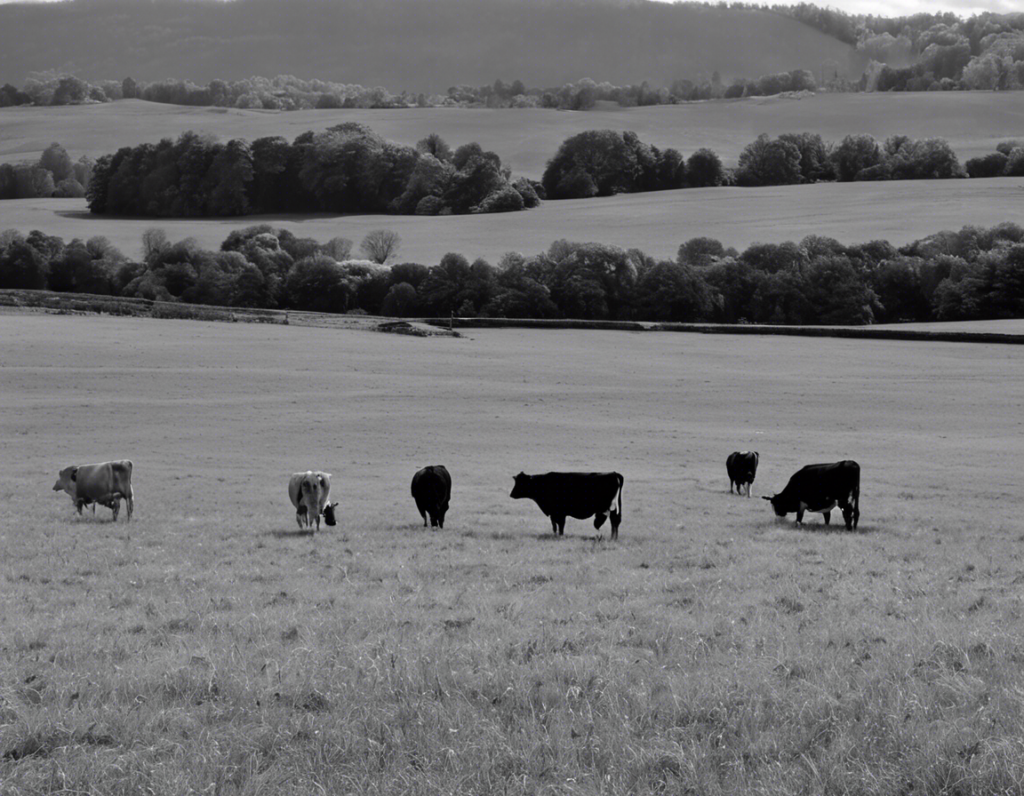Imagine a serene scene: a vast green field stretches before your eyes, with a herd of cows peacefully grazing. This simple, picturesque sight evokes a sense of tranquility and connection to nature that has been an integral part of human civilization for centuries. Let’s delve deeper into the world of cows grazing in the field and explore the fascinating aspects of this age-old practice.
Understanding Cows Grazing Behavior
Cows are ruminant animals that have a unique digestive system, allowing them to efficiently digest the fibrous plant materials they consume while grazing. The process of grazing involves cows feeding on grass and other vegetation found in pastures or fields. Cows are known to spend a significant portion of their day grazing, as it is their primary source of nutrition.
Benefits of Grazing for Cows
Grazing plays a crucial role in the overall well-being of cows. Here are some key benefits of grazing for cows:
1. Nutritional Balance:
- Grazing allows cows to have access to a diverse range of grasses and plants, promoting a balanced diet rich in essential nutrients.
2. Exercise and Movement:
- Grazing encourages cows to move around and engage in physical activity, which is vital for their health and fitness.
3. Natural Behavior:
- Grazing is a natural behavior for cows, allowing them to exhibit their natural foraging instincts.
4. Stress Reduction:
- Grazing in a spacious field provides cows with a stress-free environment, enhancing their overall well-being.
Ecological Impact of Cows Grazing
Aside from the benefits to the cows themselves, grazing also has significant ecological implications. Cows grazing in fields can contribute to:
1. Land Conservation:
- Grazing helps maintain open landscapes by preventing overgrowth of vegetation and promoting biodiversity.
2. Fertilization:
- Cows grazing in the field naturally fertilize the soil with their manure, enhancing soil fertility and promoting healthy plant growth.
3. Carbon Sequestration:
- Well-managed grazing systems can help sequester carbon in the soil, contributing to climate change mitigation.
Sustainable Grazing Practices
To ensure the sustainability of cow grazing in fields, it is essential to adopt sustainable grazing practices. These practices include:
1. Rotational Grazing:
- Rotating cows between different pastures allows for rest periods that help prevent overgrazing and promote regrowth of vegetation.
2. Monitoring Grazing Intensity:
- Regularly monitoring the grazing intensity ensures that cows are not overgrazing in specific areas, which can lead to soil degradation.
3. Water Management:
- Providing easy access to clean water sources is crucial for the health and well-being of grazing cows.
Frequently Asked Questions (FAQs)
1. What do cows eat while grazing?
- Cows primarily eat grass and other vegetation found in pastures or fields while grazing.
2. How many hours a day do cows spend grazing?
- Cows typically spend 8-12 hours a day grazing, depending on factors such as pasture quality and weather conditions.
3. Are there any risks associated with letting cows graze in fields?
- Risks such as ingestion of toxic plants and exposure to predators can pose threats to cows grazing in fields. Proper pasture management and fencing can help mitigate these risks.
4. Can cows graze on any type of grass?
- While cows can consume a variety of grasses, it is essential to ensure that the grass is not toxic to them. Some grass species can be harmful to cows if ingested.
5. How does grazing impact the quality of meat and dairy products?
- Grazing on high-quality grass and vegetation can enhance the flavor and nutritional quality of meat and dairy products derived from cows. This is why grass-fed products are often preferred for their superior taste and health benefits.
Conclusion
Cows grazing in the field is not just a scenic image but a fundamental aspect of sustainable agriculture, animal welfare, and ecological balance. By understanding the behavior of cows, the benefits of grazing, and the importance of sustainable practices, we can appreciate the profound impact that this age-old practice has on our food systems and the environment. So, next time you see a herd of cows peacefully grazing in a field, take a moment to acknowledge the harmony and benefits they bring to the world around them.
